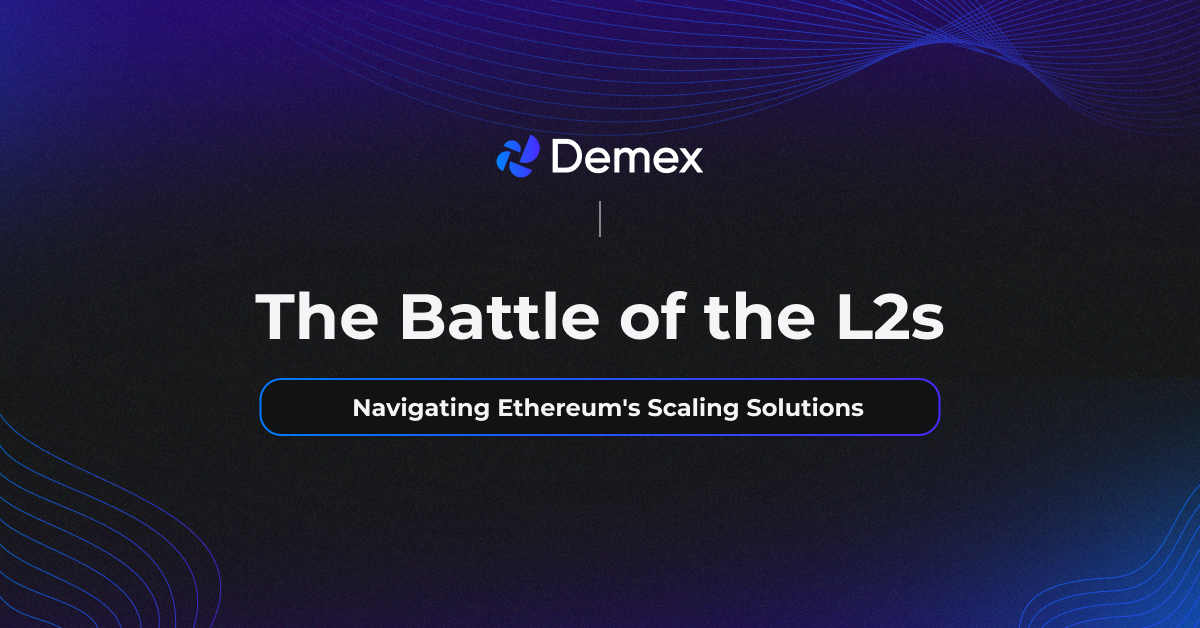The Battle of the L2s: Navigating Ethereum's Scaling Solutions

In the ever-evolving landscape of blockchain technology, the quest for scalability has become a critical battleground. This article delves into the intricacies of Layer 2 (L2) scaling solutions, exploring their significance in addressing Ethereum's scalability challenges. The focal point of this exploration lies in the ongoing competition among various L2 technologies, each vying for dominance in the Ethereum ecosystem.
Understanding the Basics: L1s and the Need for L2s
Layer 1
Before delving into Layer 2 (L2) solutions, it's crucial to grasp the concept of Layer 1 (L1). L1 serves as the foundational layer of a blockchain network, defining its rules and structure. Often referred to as the main chain or 'mainnet,' Ethereum, as an L1, faces scalability challenges due to the rising demand for decentralized applications (dApps) and smart contracts.
Why Ethereum Needs Layer 2s
Ethereum's scalability problem, with a maximum throughput of 15-45 transactions per second (TPS), hinders its growth and adoption. Layer 2 solutions emerge as a promising approach to tackle this issue, offering off-chain scaling solutions to enhance transaction throughput and efficiency without overloading the main blockchain.

Exploring Layer 2 Technologies
Rollups: zk-Rollups and Optimistic Rollups
Rollups, such as zk-Rollups and Optimistic Rollups, aggregate multiple transactions into a single proof submitted to the main chain. They enhance scalability and reduce transaction fees. zk-Rollups leverage zero-knowledge proofs for privacy and scalability, exemplified by implementations like Polygon's zkEVM and zkSync Era. Optimistic Rollups utilize fraud proofs for similar results.
Plasma, State Channels, and Payment Channels
Plasma, a Layer 2 framework, creates child chains to process transactions off the main chain, improving scalability. State channels enable off-chain transactions, with the Raiden Network serving as a Layer 2 payment protocol.
Sidechains and Polygon
Sidechains run parallel to the L1 chain, providing faster transactions. Polygon combines various Layer 2 technologies, including Plasma, zk-Rollups, and sidechains, offering a comprehensive scaling solution.
The Ethereum Scaling War: Major Players
The battle for Ethereum's scalability involves key L2 solutions:
- zk-Rollups: Utilizing zero-knowledge proofs, with implementations like Polygon's zkEVM and zkSync Era.
- Optimistic Rollups: Relying on fraud proofs, attracting projects like Optimism and Arbitrum.
- Polygon: A versatile scaling solution combining multiple Layer 2 technologies.
- Raiden Network: Offering Layer 2 payment solutions.

Comparative Analysis of Layer 2 Solutions
To comprehend the distinctions among L2 solutions, factors like security, scalability, transaction speed, and ease of integration must be considered. Each technology has its strengths and weaknesses, emphasizing the importance of addressing specific use cases within the Ethereum ecosystem.
The Future of Ethereum Scaling: A Complex Outlook
Predicting a single winner in the Ethereum scaling war is challenging, considering factors like community support, implementation ease, developer incentives, and cross-chain interoperability. Coexistence of multiple L2 solutions, each catering to diverse use cases, seems likely.
The TLDR
In the dynamic realm of Layer 2 scaling solutions, understanding the key concepts, technologies, and competitive landscape is crucial. The battle of the L2s shapes the future of Ethereum, offering solutions to its scalability challenges. Developers and users must stay informed about the latest developments to navigate this ever-evolving space effectively. As the Ethereum ecosystem expands, the role of Layer 2s remains integral to its sustained growth and innovation.

